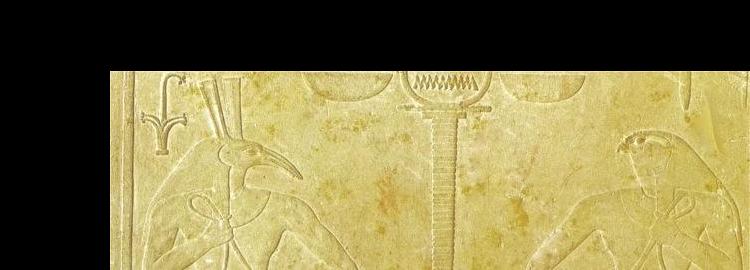You are here
Egyptian
The Egyptians led a life of order and regularity, which explains in part, the precision, clarity and dignity found in many of their works of art, as well as a somewhat cold and stiff spirit.
Aside from a purely geometric composition, Egyptian ornament also consists of a strictly methodical arrangement of native flora, including the lotus flower, lily, papyrus flower, date palm, reeds and the leaves of Indian corn. The lotus and papyrus flowers were the most popular ornamentation used and were applied to a variety of items and structures—from colossal columns to minuscule objects.
According to author, Alexander Speltz in his book, The Styles of Ornament, there were several principal features that Egyptian artists used to represent the lotus flower, including:
• The elliptical form of the buds with stalks
• The calyx of the flowers rounded off above
• The intermediate petals rounded off in a similar manner
• The lotus flowers do not have foot-leaves (unlike papyrus-shaped columns)
For the ancient Egyptians, the temple symbolized the world: the ceiling represented the heavens, supported by columns carved to resemble plants rising from the earth. An abacus was placed between the top of the column and the ceiling, hidden by the protrusion of the capital to further create the illusion of flowers under an open sky.
Egyptian carvers used the acacia and sycamore trees, which were so scarce they were considered sacred. Wood was used to create statues of royalty, courtiers, officials of the realm, priests, scribes and architects. Wood or limestone was also used to create large relief panels, thrones, coffins and furniture. Often, many of these wood-carved items were entombed with the Pharaohs and their various government officials in the belief that they would need them in the afterlife.
In fact, an excavation in Saqqara in 1860 unearthed 11 raised-relief panels in the tomb of Hesy-Ra, a government official serving under the Pharaoh Djoser. The panels, measuring approximately two feet by one foot six inches are believed to be the oldest in the world, dating from 2500 B.C. The six most well-preserved panels are exquisitely carved with hieroglyphics above the figure of Hesy-Ra, who is either seated or standing the the typical Egyptian portrait pose.
Learn more about the carved panels of Hesy-Ra's tomb.
At Agrell Architectural Carving, we expect the carving we create for you to be admired in 5,000 years' time, too.


